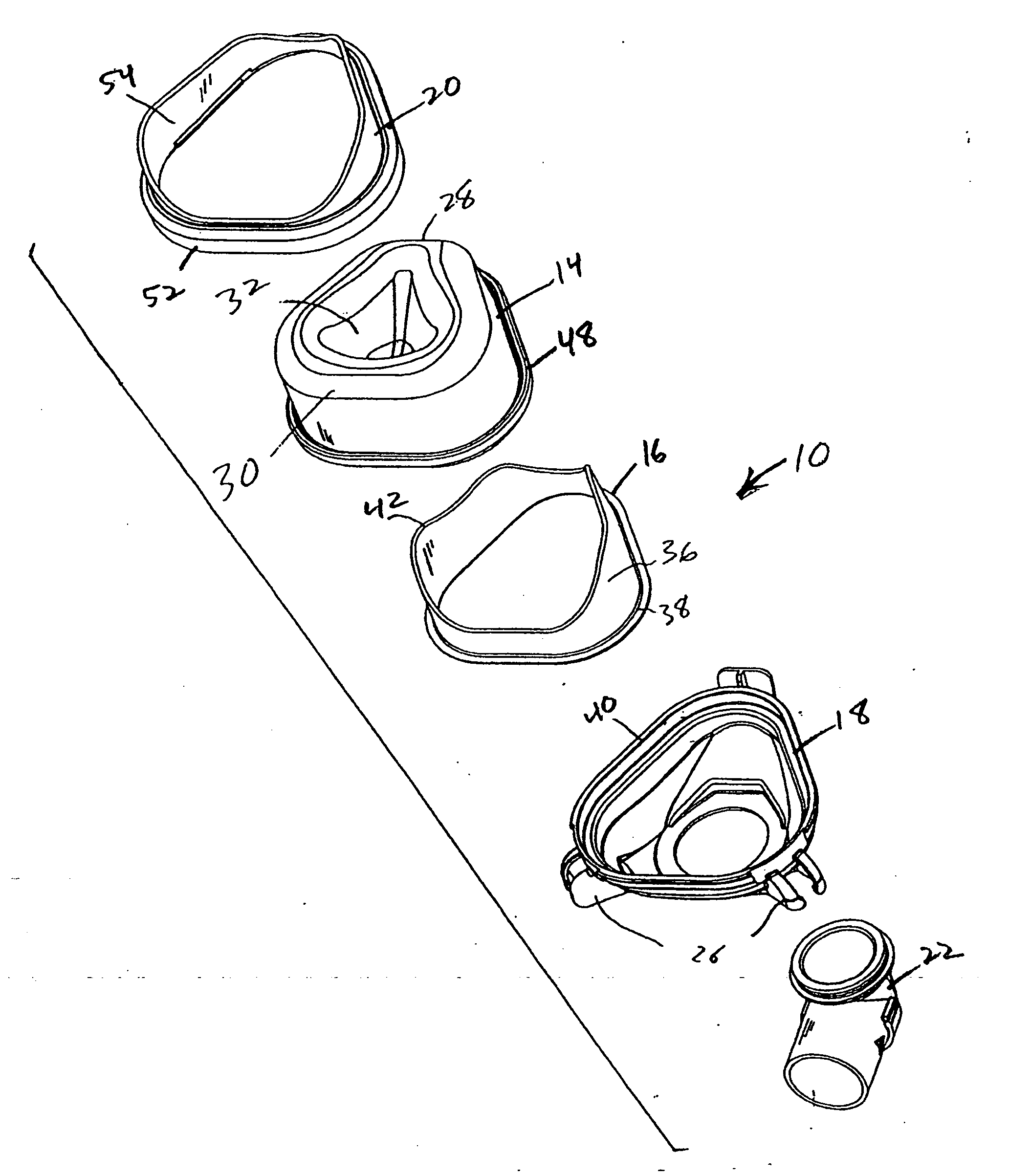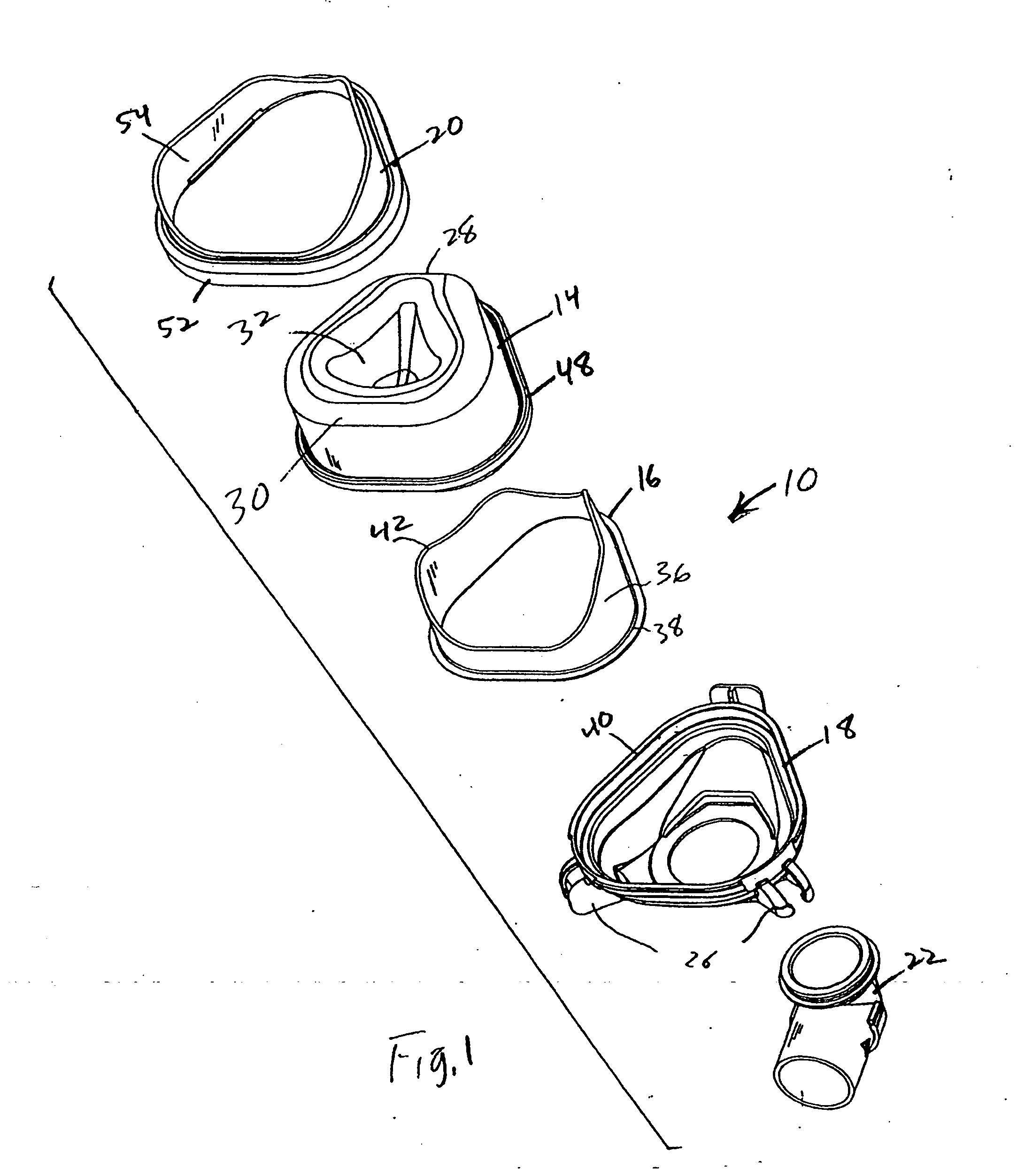Respiratory mask seal and mask using same
a technology of respirator and mask, applied in respirator, breathing mask, breathing protection, etc., can solve the problems of patient discomfort, gel cushion is sometimes perceived as bulky or heavy, and reduce the resonance effect, reduce the geometry of the cushion, and complicate the manufacturing process.
- Summary
- Abstract
- Description
- Claims
- Application Information
AI Technical Summary
Benefits of technology
Problems solved by technology
Method used
Image
Examples
Embodiment Construction
[0054]FIGS. 1-4 illustrate an exemplary embodiment of a respiratory mask 10 according to the principles of the present invention. Respiratory mask 10 functions as a patient interface device that communicates a flow of breathing gas between the patient's airway and a pressure / flow generating device 12, such as a ventilator, CPAP device, or variable pressure device. Examples of a pressure support system that generates a variable pressure include an auto-titrating device, proportional assist ventilation (PAV) device, proportional positive airway pressure (PPAP) device, C-Flex device, Bi-Flex device, or a BiPAP® device manufactured and distributed by Respironics, Inc. of Murrysville, Pa., in which the pressure provided to the patient varies with the patient's respiratory cycle so that a higher pressure is delivered during inspiration than during expiration, or other pressure support devices. The pressure generating device is shown schematically in FIG. 2. It is to be understood that the...
PUM
 Login to View More
Login to View More Abstract
Description
Claims
Application Information
 Login to View More
Login to View More - R&D
- Intellectual Property
- Life Sciences
- Materials
- Tech Scout
- Unparalleled Data Quality
- Higher Quality Content
- 60% Fewer Hallucinations
Browse by: Latest US Patents, China's latest patents, Technical Efficacy Thesaurus, Application Domain, Technology Topic, Popular Technical Reports.
© 2025 PatSnap. All rights reserved.Legal|Privacy policy|Modern Slavery Act Transparency Statement|Sitemap|About US| Contact US: help@patsnap.com



